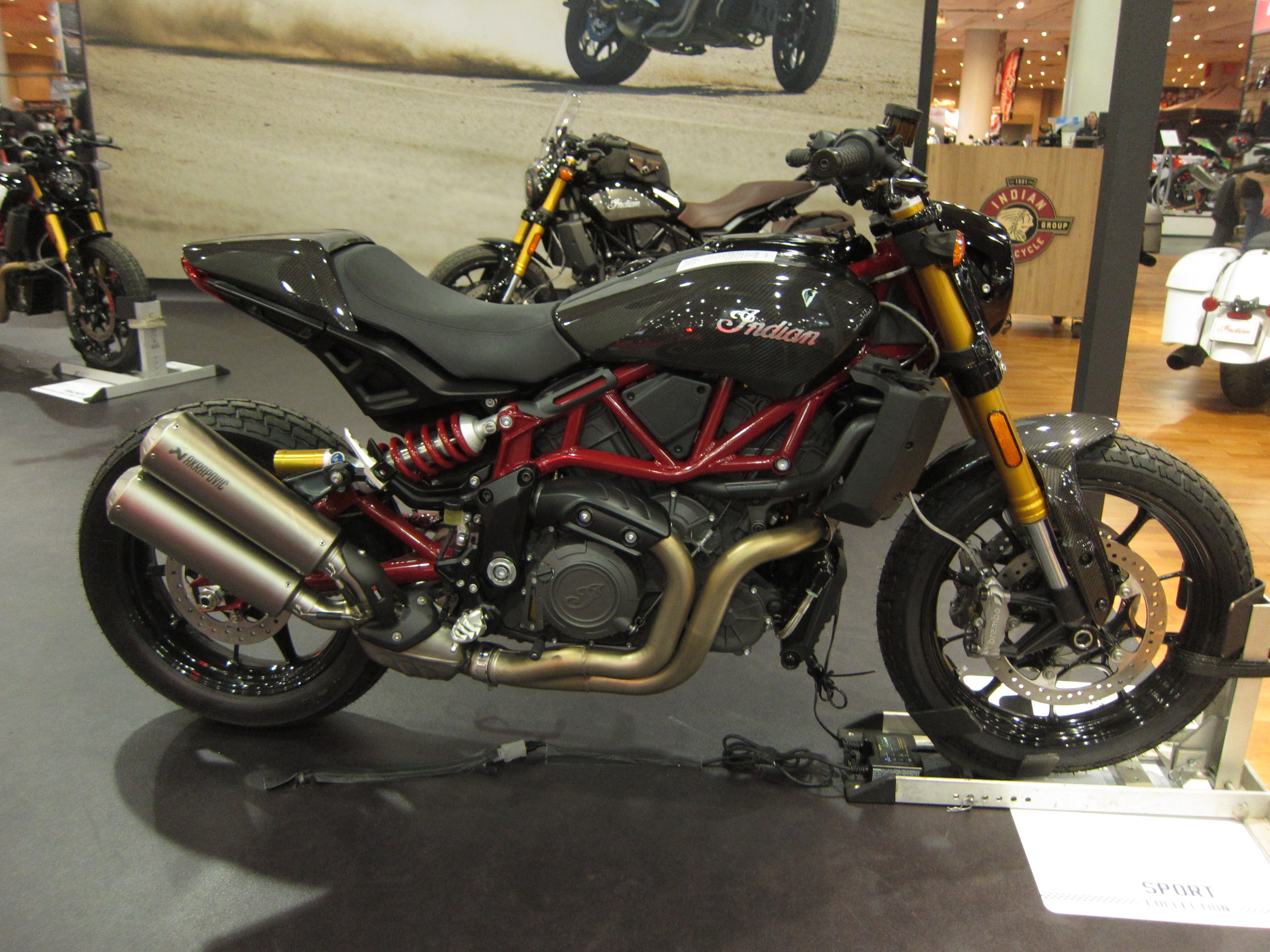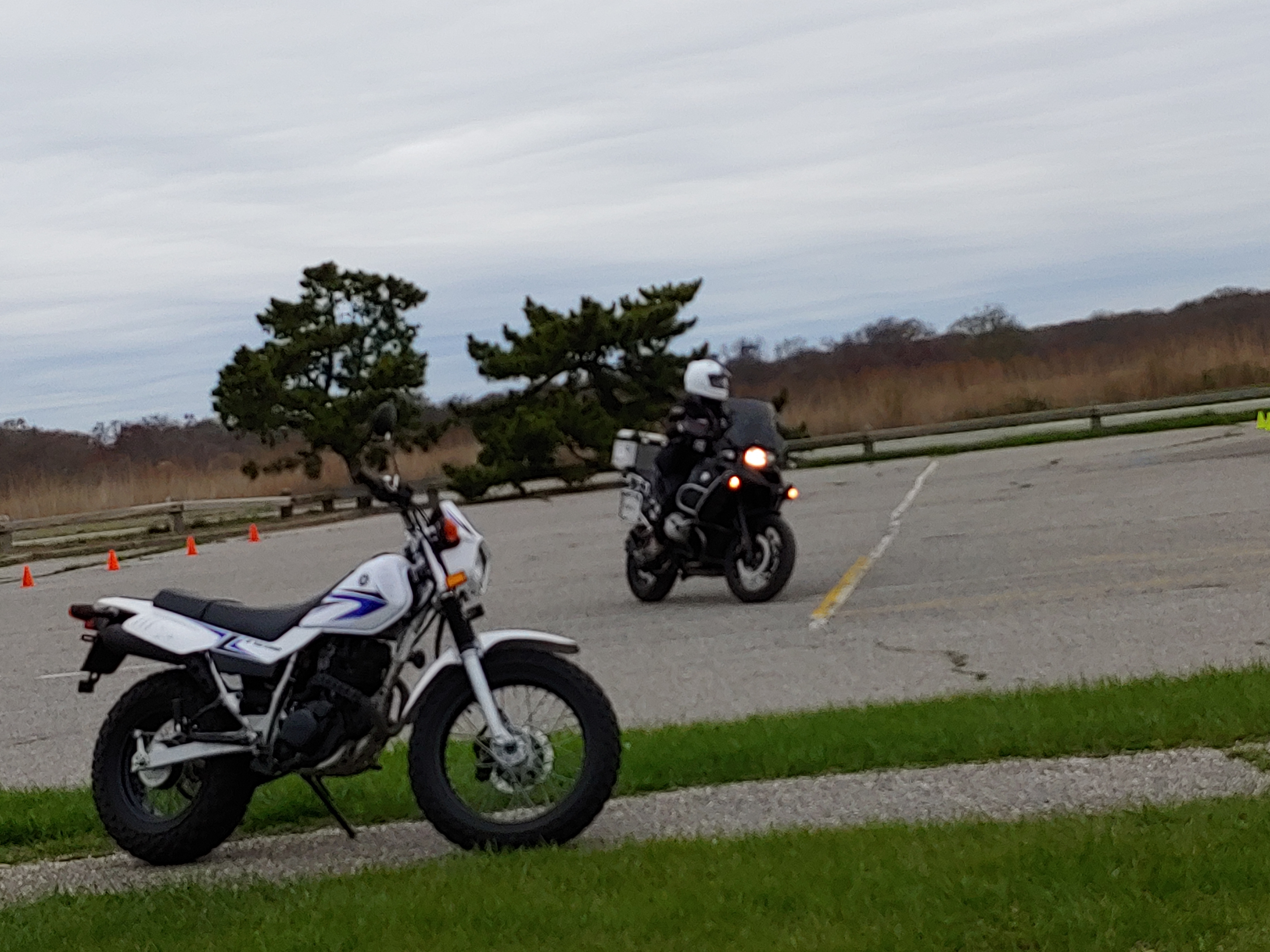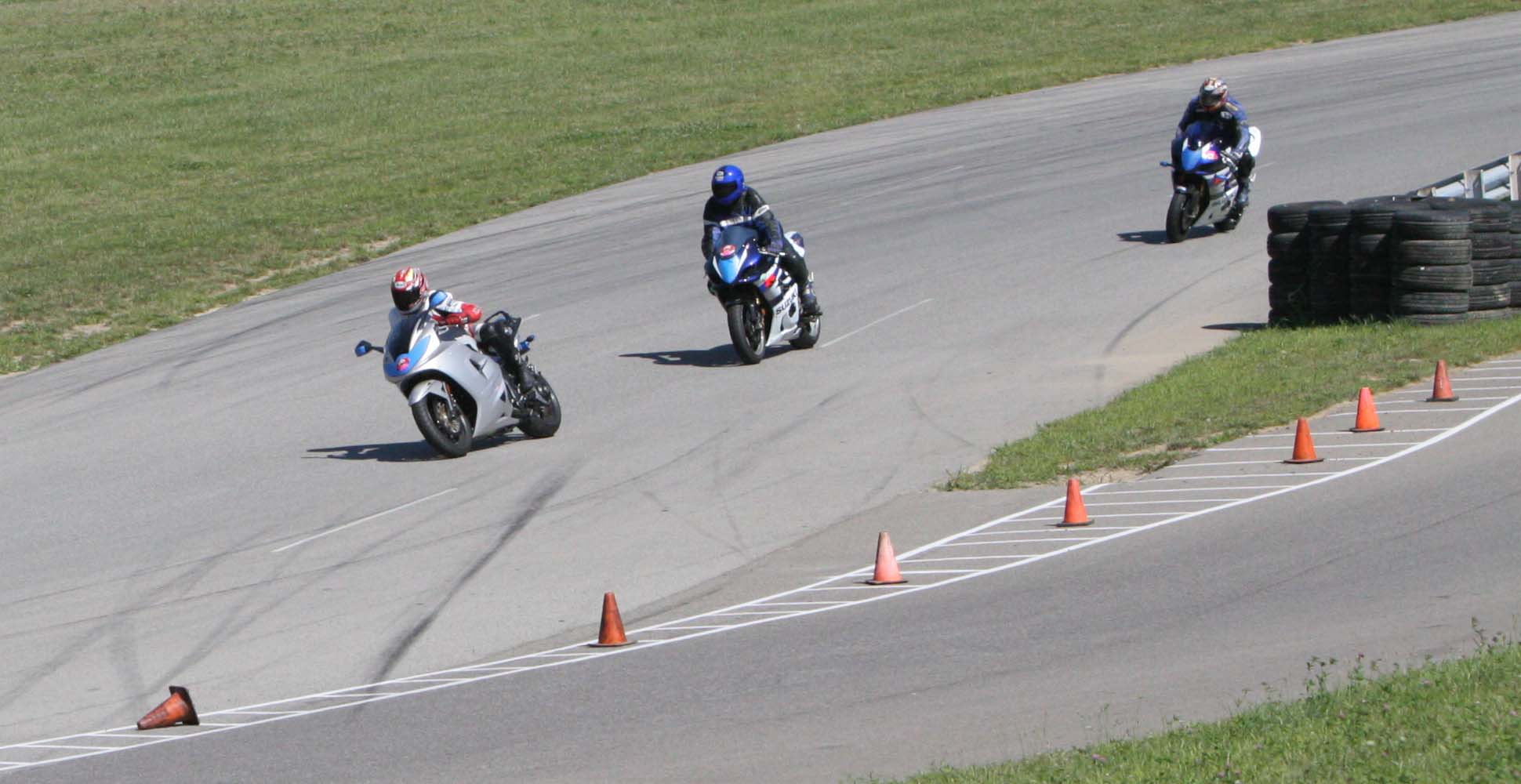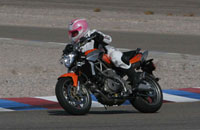Which brake should I use?
By George Tranos
| Most motorcycles in use today have two sets of brakes that are operated independently. One of the nice things about riding a motorcycle is that you can decide which brake to use at any given time. A proficient rider utilizes the brakes in specific ways for different situations. Let’s discuss the why and how of brake usage.
Bikes today come with a front (usually disc) brake (or set of brakes) that is operated by a front brake lever on the right handlebar grip and a rear (usually disc) brake that is controlled by your right foot. The brakes can be applied separately or together. Most beginner riding courses suggest operating both brakes simultaneously at all times. This is fine for the new rider to develop the good habit of using both brakes. However, in certain situations the use of only one specific brake can be useful. For a normal stop, the gradual application of both brakes allows the rider to come to a smooth stop. The weight of the motorcycle shifts forward during braking and the front suspension compresses. Once this occurs, the front tire is loaded with traction. This is the most critical time in the process. If a rider grabs the front brake lever too hard, they can lock the front tire and cause a skid. If this happens, the lever should be released immediately to prevent a low-side fall (where the motorcycle falls over after sliding and the rider falls off). After the weight transfer to the front, the rider can squeeze the front brake lever a little bit harder to get a shorter stop. This progressive use of the brakes, from gentle to firmer, is the proper method to achieve maximum braking without locking up either wheel. |
 Notice the dual front and single rear brakes on this Indian FTR1200 |
| As the weight transfers forward, the rear becomes lighter. Increasing brake pressure on the rear could cause a skid as the rear tire has less traction as weight shifts forward. This is generally why the rear wheel is not equipped with very powerful brakes. For most motorcycles, the front does seventy (70) percent or more of the braking! On very short wheelbase, lighter, sport-style motorcycles, the rear wheel can even come off the ground completely (called a stoppie) and would then be doing no braking at all!
In a normal stop, you should apply both brakes simultaneously using the gentle to firmer process described above. The motorcycle should be shifted down through the gears and you should stop in first gear so you can take off again if necessary. This should be done early enough so the left foot can come to the ground first. The right foot should remain on the rear brake until the rider is fully stopped. Why would someone then want to use only one brake? Good question! There are a couple of situations where only one brake is preferred. In slow speed maneuvers, especially with the handlebars turned, the front brake provides too much power and should be avoided. When riding slowly in a slow speed (parking lot) turn, the motorcycle wants to fall into the turn. To offset this effect, additional throttle (power) can upright the motorcycle. Using your upper body to counterweight the motorcycle by letting the motorcycle lean and you stay upright can also help. Rolling off the throttle will cause the motorcycle to want to fall. Adding a front brake here can also make the motorcycle drop more quickly. Using the rear brake will not have the same effect and could help control the motorcycle’s speed. Apply the rear brake at the same time as the throttle is used can be an offsetting force that can stabilize the motorcycle. |
 Use only the rear brake when making slow speed U-turns like this one! |
| Other low speed situations where rear brake only should be used include so-called rolling stops, where you might just want to pause without fully stopping prior to continuing. By using only the rear brake, a rider can keep their right hand fully on the throttle to roll off and on. Use of the clutch in this situation allows very slow speed stopping and starting. It’s kind of like an aircraft touch and go where you slow and then accelerate again without stopping.
Low speed clutch control situations also require use of only the rear brake. Using the throttle, clutch and rear brakes together is a skill riders should practice to allow them to ride very slowly. This is useful in traffic jams, when approaching left hand turns at intersections and in limited space maneuvers. Okay, now that we’ve discussed using only the rear brake, are there any situations where you might want to use only the front brake? We discussed forward weight shift earlier and I noted that in extreme cases, the rear wheel may come off the ground. When the rear wheel lightens, the possibility of it locking up increases. If the rear locks, it could slide sideways. If it suddenly were to regain traction, it will snap back in line immediately and could cause loss of control and a high-side fall (where the rider goes over the handlebars). Motorcycle racers and track day riders can use their brakes to the extreme. Many use only the front brake on the racetrack to avoid the possibility of locking the rear wheel under heavy braking. As the front is doing most of the braking anyway because of the prodigious weight shift, the loss of a little braking power by not also using the rear brake is offset by the increasing likelihood of rear wheel lockup so they avoid it completely. This allow allows them to keep the balls of their feet on the footpegs for body positioning (leaning off the motorcycle) for maximizing lean angle. |
 The author (left) on Beaver Run racetrack in Pennsylvania on his Triumph Sprint ST |
| Trail braking is another situation where use of the front brake alone can benefit the rider. An advanced technique, trail braking is defined as trailing off the brakes when entering a curve. Turning under braking is discouraged for new riders but can be used to your advantage by increasing the bike’s rake when the front suspension is compressed. This can make turn-in easier. The risk is overwhelming the traction of the front tire so less braking is utilized as the bike leans (trailing off the brakes as lean angle is increased). This is a skill that should first be practiced on the track if possible and at slower speeds until proficiency is attained.
Knowledge of braking usage is an important weapon in a rider’s toolbox. Learning to use the proper brake at the right time can help you navigate life’s roadways more safely and have more fun doing so. |





